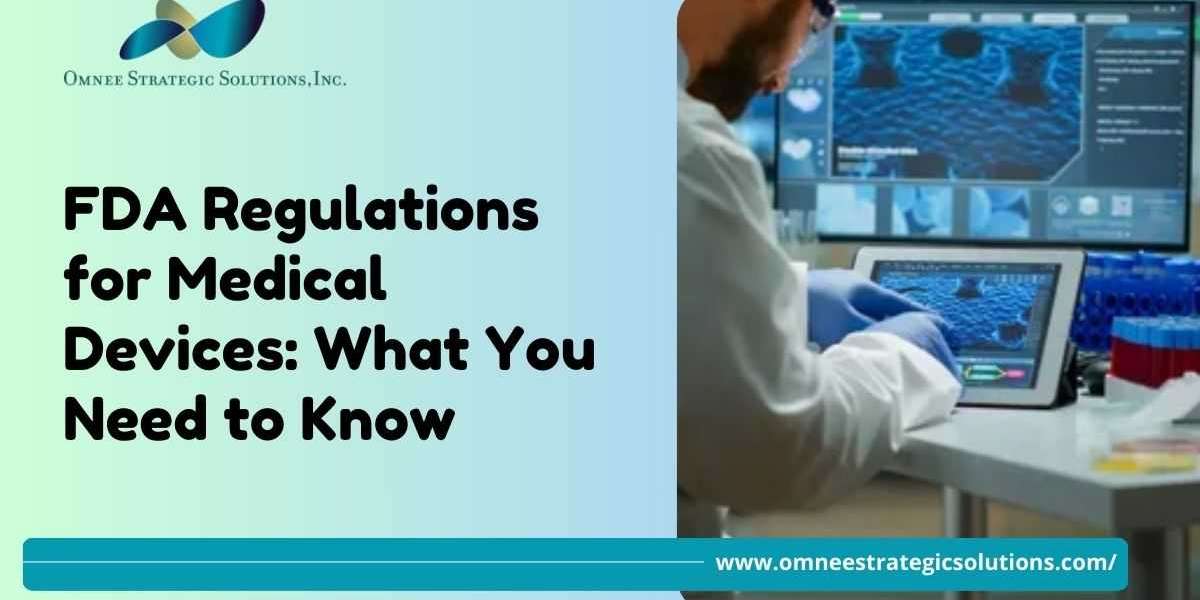Understanding FDA Regulations for Medical Devices is essential for anyone involved in the manufacturing, distribution, or use of medical technology. The U.S. Food and Drug Administration (FDA) sets these regulations to ensure that medical devices are safe and effective for their intended use. This blog will guide you through the key aspects of FDA Regulations and provide practical insights to help navigate this complex regulatory landscape.
What Are FDA Regulations for Medical Devices?
The FDA's regulations for medical devices are designed to ensure the safety and efficacy of medical products before they can be marketed in the United States. These regulations cover everything from the initial design and development to the manufacturing processes and post-market surveillance.
Key Categories of Medical Devices
The FDA classifies medical devices into three categories based on their risk level:
Class I Devices: These are considered low-risk and typically do not require premarket approval. Examples include elastic bandages and handheld surgical instruments. Most Class I devices are subject to general controls, such as proper labeling and manufacturing practices.
Class II Devices: These devices have a moderate risk and require premarket notification, also known as 510(k) clearance. Examples include infusion pumps and certain diagnostic devices. Manufacturers must demonstrate that their device is substantially equivalent to a device already on the market.
Class III Devices: These are high-risk devices that require premarket approval (PMA). Examples include implantable pacemakers and breast implants. Class III devices must undergo rigorous testing and clinical trials to prove their safety and effectiveness.
The FDA Approval Process
The process for obtaining FDA approval varies depending on the class of the device:
Premarket Notification (510(k)): For most Class II devices, manufacturers must submit a 510(k) to the FDA, demonstrating that their device is substantially equivalent to an existing device. This process typically involves submitting detailed information about the device’s design, materials, and intended use.
Premarket Approval (PMA): Class III devices require a more rigorous process. Manufacturers must submit a PMA application, which includes extensive data from clinical trials to prove that the device is safe and effective. The FDA reviews the application, and an advisory committee may also be involved in assessing the device’s suitability for the market.
Investigational Device Exemption (IDE): Before conducting clinical trials, manufacturers must obtain an IDE from the FDA. This exemption allows for the use of an unapproved device in clinical studies to gather data on its safety and effectiveness.
Post-Market Requirements
Once a device is on the market, manufacturers must adhere to post-market requirements, including:
Adverse Event Reporting: Manufacturers are required to report any adverse events or device-related problems to the FDA. This helps the FDA monitor the device’s performance and take action if necessary.
Device Tracking: For certain high-risk devices, manufacturers must establish tracking systems to trace the device’s use and ensure its safety throughout its lifecycle.
Post-Market Surveillance: The FDA may require additional studies or data collection to monitor the long-term effects of the device. Manufacturers must comply with these requirements to maintain their market authorization.
Challenges in Navigating FDA Regulations
Navigating FDA regulations can be challenging due to the complexity of the rules and the rigorous testing required. Manufacturers often face difficulties in:
Understanding and Implementing Regulations: Keeping up with the latest regulations and ensuring compliance can be time-consuming and require specialized knowledge.
Preparing Comprehensive Documentation: Submitting complete and accurate documentation is crucial for obtaining FDA approval. Incomplete or incorrect submissions can lead to delays or denials.
Managing Costs and Timelines: The FDA approval process can be costly and lengthy. Manufacturers must plan for these expenses and delays when bringing a new device to market.
Tips for Successful Navigation
Stay Informed: Regularly review updates from the FDA and industry organizations to stay current with regulatory changes.
Consult with Experts: Work with regulatory consultants or legal experts who specialize in FDA regulations to navigate the approval process more effectively.
Prepare Thoroughly: Ensure that all documentation is complete and accurate before submission to avoid delays.
Conclusion
Navigating FDA regulations for medical devices is a crucial part of bringing safe and effective products to market. By understanding the classification system, approval processes, and post-market requirements, manufacturers can better manage the regulatory challenges and ensure compliance. With careful preparation and expert guidance, the journey through FDA regulations can be smoother and more successful.
If you're looking for a partner who understands the nuances of FDA regulations and can help streamline your compliance efforts, consider working with industry experts. Companies like Shritija Rugs, known for their attention to detail and commitment to quality, can provide valuable insights and support in navigating these complex regulations.
By following these guidelines and leveraging expert resources, you can ensure that your medical devices meet the FDA's stringent standards and contribute positively to the healthcare industry.








